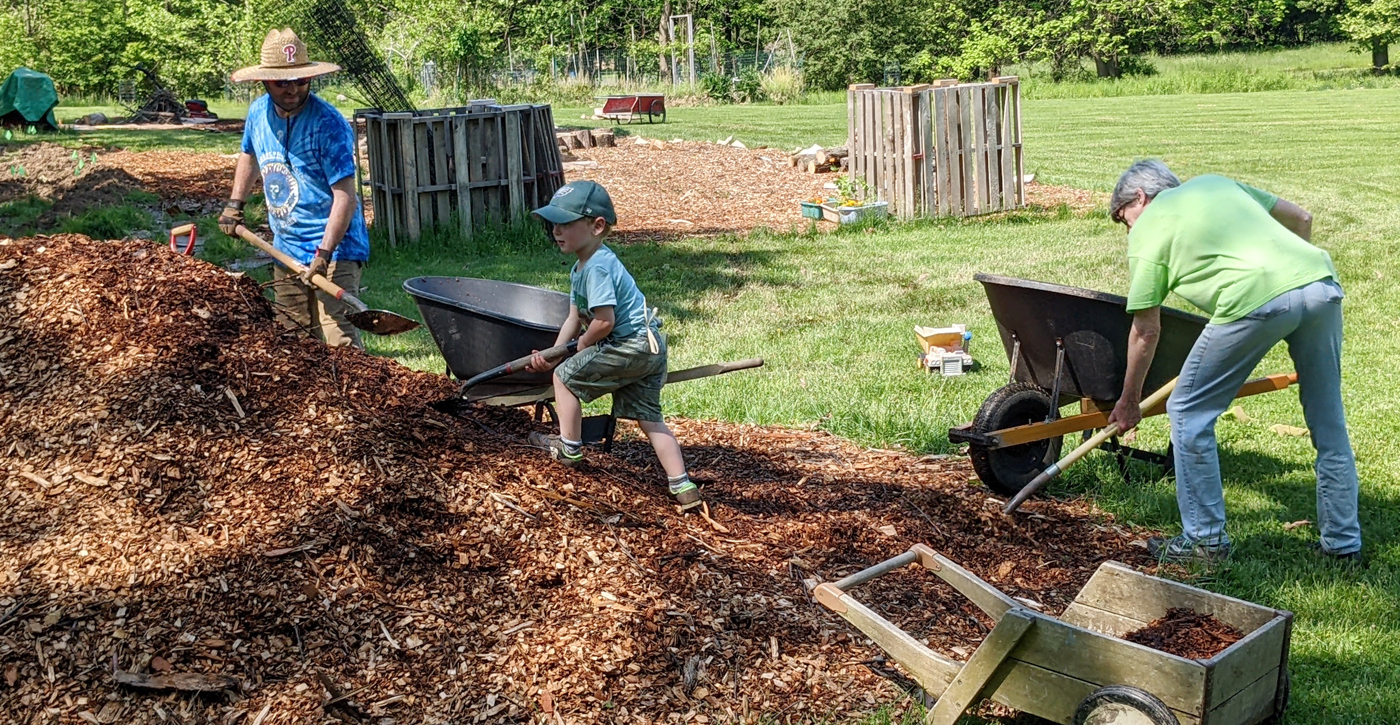14 Community-Focused Ways Quaker Meetings Can Steward Their Land
From FRIENDS JOURNAL, June 1, 2022
By Paige Menton

Gwynedd (Pa.) Meeting land restoration work. Members use wood chips and cardboard as sheet mulch to turn areas of the lawn into a community garden. Photos by Paige Menton.
The following list accompanies my article “Coming Home to Land Restoration,” in which I share about a road trip I took last fall to learn about how meetings consider and take care of their land. I visited seven meetings in five states: Lancaster (Pa.) Meeting; Third Haven Meeting in Easton, Md.; Charlottesville (Va.) Meeting; Raleigh (N.C.) Meeting; Celo Meeting in Burnsville, N.C.; Birmingham (Ala.) Meeting; and Fairhope (Ala.) Meeting. I also gained insight from serving on a committee at Gwynedd (Pa.) Meeting that developed a sustainable land use plan for its almost 13 acres. The list includes real examples from some of these meetings.
- Collaborate with other churches in the area. Example: Lancaster (Pa.) Meeting participated in a roundtable with local churches about earthcare.
- Collaborate with organizations (watershed, gardening clubs) and/or with the municipality. Example: Third Haven Friends collaborated with a watershed organization and the town of Easton, Md., on a riparian buffer project.
- Have members with expertise train others: birders, master gardeners, environmental educators. Example: A birder at Charlottesville (Va.) Meeting shared her knowledge with members of the community.
- Invite high school environmental clubs, Boys Scouts, and Girl Scouts to help with planting native plants or removing invasives.
- Invite other groups to use your land: people in apartments, after-school and summer programs, etc. Example: The Burdock Book Collective meets in a room at Birmingham (Ala.) Meeting, and the group started an herb garden on the meeting grounds.
